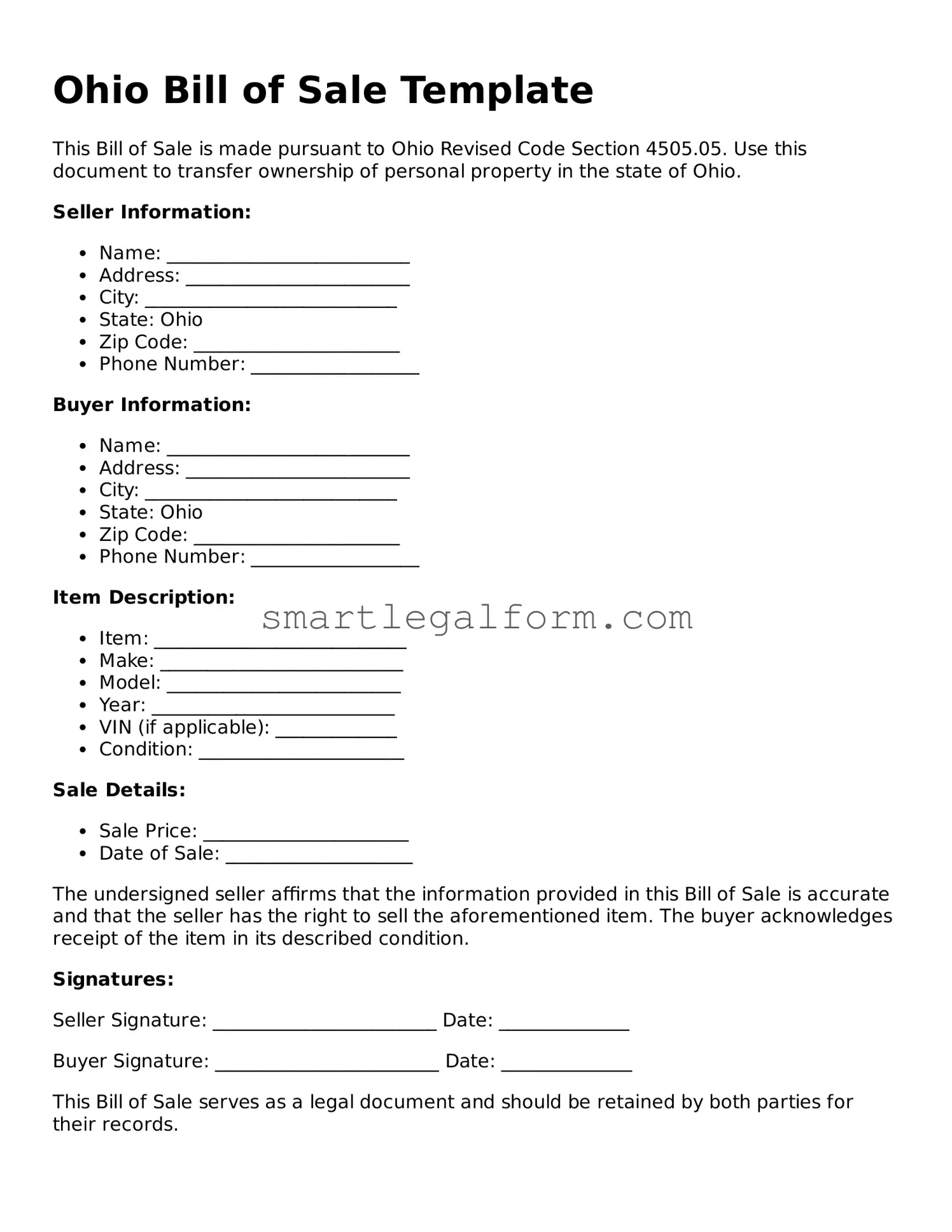Filling out the Ohio Bill of Sale form can seem straightforward, but many people make common mistakes that can lead to complications later. One frequent error is not providing complete information about the buyer and seller. It’s essential to include full names, addresses, and contact details. Omitting any of this information can create confusion or disputes down the line.
Another mistake involves failing to accurately describe the item being sold. The Bill of Sale should include details such as the make, model, year, and Vehicle Identification Number (VIN) for vehicles. For other items, a clear description helps prevent misunderstandings. Without this information, proving ownership can become difficult.
Many individuals overlook the importance of signatures. Both the buyer and seller must sign the document for it to be legally binding. Some people think that a verbal agreement is enough, but without signatures, the Bill of Sale may not hold up in court.
Additionally, not including the date of the transaction is a common oversight. The date provides a clear record of when the sale took place. This information can be crucial for tax purposes or in case of disputes. Leaving it blank can lead to confusion about the timeline of ownership.
Another mistake is not keeping a copy of the Bill of Sale. After filling out the form, it is vital for both parties to retain their copies. This serves as proof of the transaction and can be useful if any issues arise later. Failing to do so can leave one party without necessary documentation.
Some people also neglect to check for typos or errors in the information provided. Simple mistakes can lead to significant problems. Double-checking the form before submission can help ensure that all details are correct and clear.
Not understanding the purpose of the Bill of Sale can lead to confusion. This document serves as proof of transfer of ownership and is often required for registering vehicles or other items. Being unaware of its importance can result in complications later on.
Another common error is not knowing the specific requirements for the type of item being sold. Different items may have unique requirements for documentation. Researching these requirements ahead of time can save time and prevent issues.
Lastly, some individuals fail to consult with a professional when needed. If there are uncertainties about how to fill out the form, seeking assistance can provide clarity. This can prevent costly mistakes and ensure that the Bill of Sale is completed correctly.
